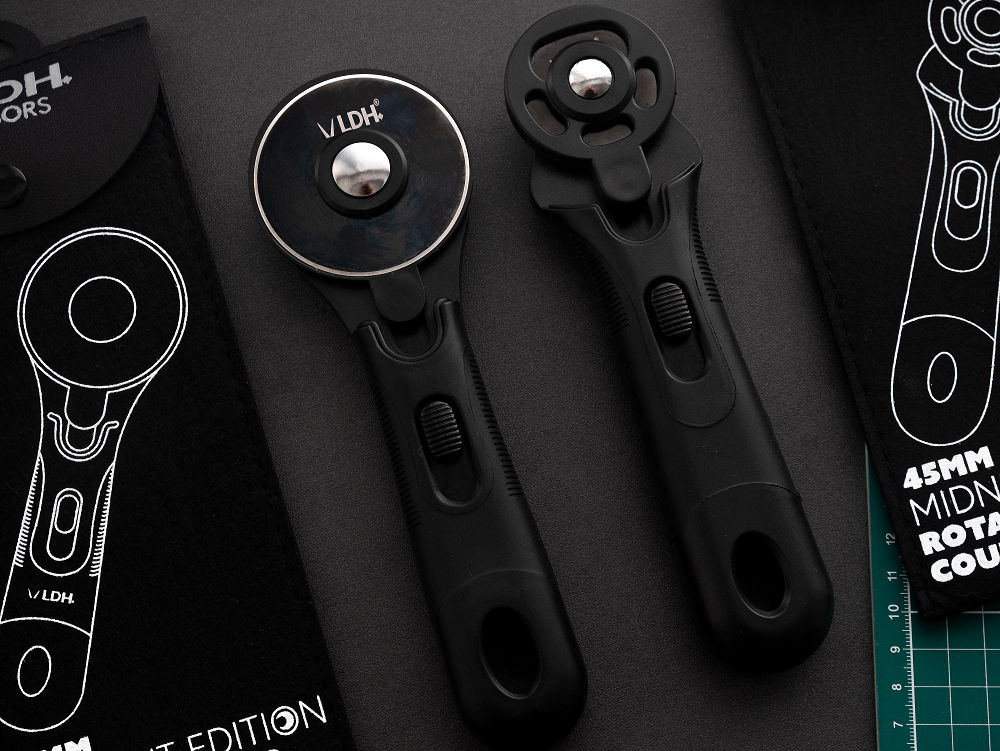What's the difference between 45mm and 60mm rotary cutters?

Rotary cutters were first introduced to the garment sewing world in 1979, and was a tool quickly adopted by quilters due to its ease of use when cutting small pieces for patchwork compared to using dressmaking shears. There are now so many rotary cutter options to choose from, from different sizes to different handle shapes, and even different blade types. Of the two most popular rotary cutter sizes, 45mm and 60mm, what are the differences?
45mm Rotary Cutter
Of the 4 rotary cutter sizes available - 18mm, 28mm, 45mm, 60mm - 45mm is generally considered the most versatile. Similar to a smaller fabric shear, such as an 8” or 9” fabric shear, 45mm rotary cutters are easier to maneuver around corners and tight cuts compared to a 60mm cutter. They’re typically lighter due to the smaller blade and handle, but this can depend on the handle style that you choose. Our Midnight Edition 45mm and 60mm rotary cutters both have the same straight-style handle and are the same length.
If you’re someone who has numerous hobbies, such as quilting, garment making, bag making, and more, having one tool that is good for multiple crafts may be best for you!60mm Rotary Cutter
The largest rotary cutter size available on the market, a 60mm rotary cutter can be intimidating for those who haven’t used one before. It’s most similar to a larger fabric shear, such as a 10”, due to the size of the blade and function. It’s easier for making longer cuts, which are typically found in garment sewing and quilting tasks.
One well noted fact about 60mm rotary cutters is that they are better at cutting thicker materials. This is because of the leverage you get from the larger blade; it can handle more force applied to it. Another interesting detail is that 60mm blades can last longer because they make fewer rotations when cutting.
Tips & Tricks
While, like scissors and snips, the best rotary cutter for you comes down to personal preference, we do have a couple of tips to share that can help you get the best performance from a rotary cutter of any size.
- Use a self-healing mat. These mats are easier on your rotary blades than other kinds. This is because the softer surface doesn’t cut into the blade and leave uneven grooves on the surface, which is typical with other mats.
- Try it before you buy it, if you can! Because, like so many tools, rotary cutters can feel different person to person, if you have the opportunity to try different sizes do take advantage. What feels good to someone else may not to you.
- Stick to one material when cutting. Have you ever been scolded for using fabric shears to cut paper? The same principle is true for rotary blades. If your blade is starting to dull, store it for when you need to cut some paper.
Another factor to keep in mind when choosing your rotary cutter is that some companies design their cutters and blades to only fit their own designs. Our Midnight Edition Rotary Cutters and blades of all sizes come with universal openings, so if you already have a handle or blade that you love to use, you can always put them on our cutter or put our blades onto your cutter!



Leave a comment